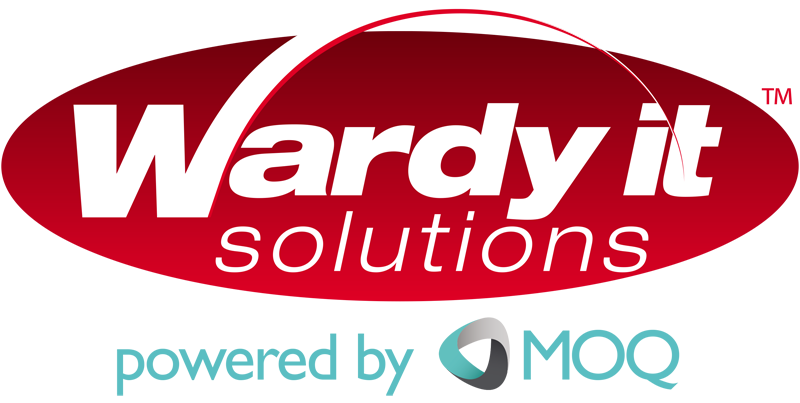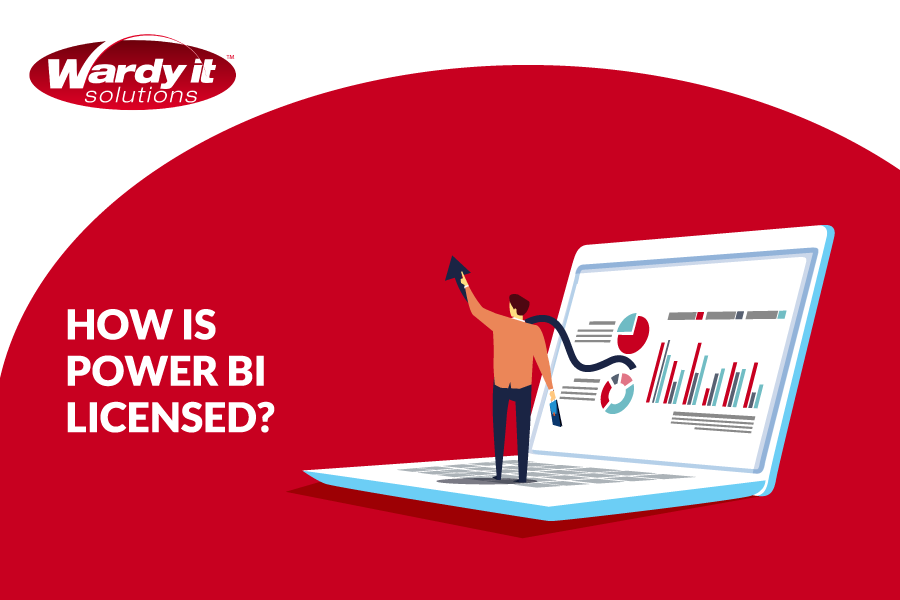Power BI Licensing
A question that our customers frequently ask is; “What does it cost to use Power BI in my organisation”?
The simple answer is that it can cost nothing, with the price increasing based on your organisational requirements.
A free license is ideal for prototyping solutions, visualising public domain data, or working individually. Licenses only become necessary when you wish to share your content securely and collaborate with others.
There are four main licensing options in Power BI, and the table below summarises the differences between each:
| Power BI (Free) | Power BI Pro | Power BI Premium | Power BI Embedded | |
| Licensing Structure | No cost | Per use | Per Capacity Node (SKU EM and P series) | Per Node (SKU A series) by Usage |
| Price | Free | $13.70 per month per user | From $6,858.00 per month | From $1.3842 per hour |
| Compute environment | Shared capacity with Azure | Shared capacity with Azure | Dedicated to your organisation | Dedicated to your organisation |
| Collaboration | Cannot share with other users within Power BI Service. | With other Power BI Pro users. | Shared content published by Power BI Pro users. Content can be consumed bu Power BI (Free) and Power BI Pro users. | Content published by Power BI Pro users. Content shared to anyone through a custom application. |
| Maximum size for individual dataset | 1GB | 1GB | 10GB | N/A |
| Maximum Storage | 10GB | 10GB per user | 100TB | N/A |
| Automatic refresh per day | N/A | 8 | 48 | N/A |
Power BI Desktop
Power BI Desktop is the development tool used for developing Power BI data models and Power BI report visualisations. This tool is completely free to download and use.
The file produced by Power BI Desktop is a *.pbix file. In theory, you can send this *.pbix file to others for sharing the visualisations. However, a lot of our customers have run across issues with maintaining the correct versions, losing files, and collaborating changes with others.
Power BI (Free)
Power BI (Free) allows you to publish Power BI reports onto the Power BI Service to take advantage of some of its features. However, you are limited to only working in “My workspace”, which is for individual use. You can also only publish Power BI reports that were developed using Import mode to Power BI (Free).
Power BI (Free) also allows you to consume content that has been published to a Power BI Premium workspace.
With Power BI (Free), you can:
- Publish Power BI reports (Import mode) to My workspace
- Upload Excel workbooks onto My workspace
- Create personal dashboards
- Use Power BI datasets published in My workspace to develop Power BI reports
- Publish Power BI reports to the web to share publicly
- Consume content published to a Power BI Premium workspace
- Maximum size of a Power BI dataset model using Import Mode is 1 GB
Power BI Pro
Power BI Pro gives you access to most Power BI features, including allowing users to collaborate with other Power BI Pro users through app workspaces. Power BI Pro is ideal for allowing self-service and modern data analysis in the cloud and is fully managed by Microsoft. Licenses can be purchased for $13.70 AUD per month per user or comes included with Office 365 Enterprise E5.
Power BI Pro allows you to do everything that Power BI (Free) can do, with the addition of the following features:
- Publish and share Power BI reports to app workspaces
- Share Power BI reports and dashboards to other Power BI pro users
- Subscribe to dashboards and reports to be notified of changes
- Use self-service data preparation with Power BI dataflows
- Use Direct Query and Connect Live to connect to data sources
- Analyse data in Microsoft Excel
- Schedule automated refresh of Power BI datasets (8 times per day)
- Incremental data refresh
- Use Power BI Q&A to explore your data using natural language
- Maximum size of a Power BI dataset model using Import Mode is 1 GB
Power BI Premium
If an organisation has a larger user base or the Power BI dataset model grow beyond 1 GB, Power BI Pro licensing quickly becomes infeasible. The Power BI Premium calculator can be used to determine whether Power BI Premium will be suitable for your organization size. Power BI Premium Licenses can be an excellent choice for large organisations – Power BI Premium uses a per node licensing model instead of per user and allows anybody in the organisation to interact with and consume the reports.
With Power BI Premium licensing, organisations have a wide range of capacity choices, based on memory and virtual cores, which can be scaled up as data analysis requirements change. You pay for nodes which have dedicated capacity and resources.
Power BI Premium licensing starts at $6,858.00 AUD per month per dedicated cloud compute and storage resource on an annual subscription.
Power BI Premium allows you to do everything that Power BI (Pro) can do, with the addition of the following features:
- Share data with anyone without purchasing a per-user license
- Dedicated compute processing environment
- Deploy Power BI content to multiple regions
- Comes with Power BI Report Server (more about this in the next section)
- Support for data residency by region (Multi-Geo)
- Schedule automated refresh of Power BI datasets (48 times per day)
- Store Power BI data to Azure Data Lake Storage Gen2 to use with other analytical tools
- AI-powered data modeling using AutoML, Cognitive Services, and Azure Machine Learning
- Develop and deploy paginated reports
- Maximum size of a Power BI dataset model using Import Mode depends on the node capacity
There are two Power BI Premium SKU types – EM and P. The table below shows the resources of each Premium SKU at the time of writing:
| Capacity Nodes | Total V-Cores | Backend V-Cores | RAM (GB) | Frontend V-Cores | Model Fresh Parallellism |
| EM1 | 1 | 0.5 | 3 | 0.5 | 1 |
| EM2 | 2 | 1 | 5 | 1 | 2 |
| EM3 | 4 | 2 | 10 | 2 | 3 |
| P1 | 8 | 4 | 25 | 4 | 6 |
| P2 | 16 | 8 | 50 | 8 | 12 |
| P3 | 32 | 16 | 100 | 16 | 24 |
| P4 | 64 | 32 | 200 | 32 | 48 |
| P5 | 128 | 64 | 400 | 64 | 96 |
Power BI Embedded
If an organisation wishes to embed Power BI in a custom application or website, then purchasing a Power BI Embedded capacity is required for Production use. This licensing model is based on the number of page renders for the embedded reports and is provided as a PaaS (Platform as a Service) offering. For development and testing purposes, a Power BI Pro license does give you a limited amount of free embedding tokens, but does not come with features such as Row Level Security, cross-filtering and Q&A.
The basic formula for pricing is: Hours * No of days * Price per hour. For instance, if someone opts for an A1 SKU and keeps it running for one month then the cost would be calculated as: 24 * 30 * $1.0081 = $725.832. Every SKU has a different per hour charge.
The total cost of Power BI Embedded depends on the node type chosen and the number of nodes deployed, as well as how long they are running for. Node types differ based on number of V-cores and RAM.
Power BI Embedded allows you to:
- Embed Power BI reports to be viewed natively on your custom application
- Is priced by page renders
- Row level security with your application’s credentials
- Users do not need individual Power BI licenses
- Maximum size of a Power BI dataset model using Import Mode depends on the node capacity
The table below shows example pricing in AUD with the region being in Australia East:
| Node Type | Dedicated Infrastructure | Virtual Cores | Memory | Front-end/ Back-end cores | Price |
| A1 | No | 1 | 3 GB RAM | 0.5/0.5 | $1.3842/hour |
| A2 | No | 2 | 5 GB RAM | 1/1 | $2.7572/hour |
| A3 | Yes | 4 | 10 GB RAM | 2/2 | $5.5253/hour |
| A4 | Yes | 8 | 25 GB RAM | 4/4 | $11.0616/hour |
| A5 | Yes | 16 | 50 GB RAM | 8/8 | $22.1342/hour |
| A6 | Yes | 32 | 100 GB RAM | 16/16 | $44.2801/hour |
Power BI Report Server
Another useful Power BI offering is Power BI Report Server, which allows you to publish Power BI reports on-premises alongside SQL Server Reporting Services reports. There are two ways in which to acquire Power BI Report Server:
- Power BI Report Server is included with a Power BI Premium P SKU license. It is not included with EM SKUs.
- Power BI Report Server is included with SQL Server Enterprise Edition with a Software Assurance Agreement
Power BI Report Server comes with a secure web portal where you can access all your reports and KPIs. The interface is very different to the Power BI Service, so you’ll need to assess whether this suits your organisational requirements.
There is also a different version of Power BI Desktop (optimised for Power BI Report Server), which needs to be used to author reports for the Power BI Report Server.
With Power BI Report Server, you can:
- Publish Power BI reports on-premises
- Host Power BI reports alongside SSRS reports
- Create email subscriptions for paginated reports
- Other features you are used to with SSRS Report Server
Hopefully, this helps to de-mystify the licensing situation around Power BI and assist your organisation in unlocking the powerful potential of these products.

